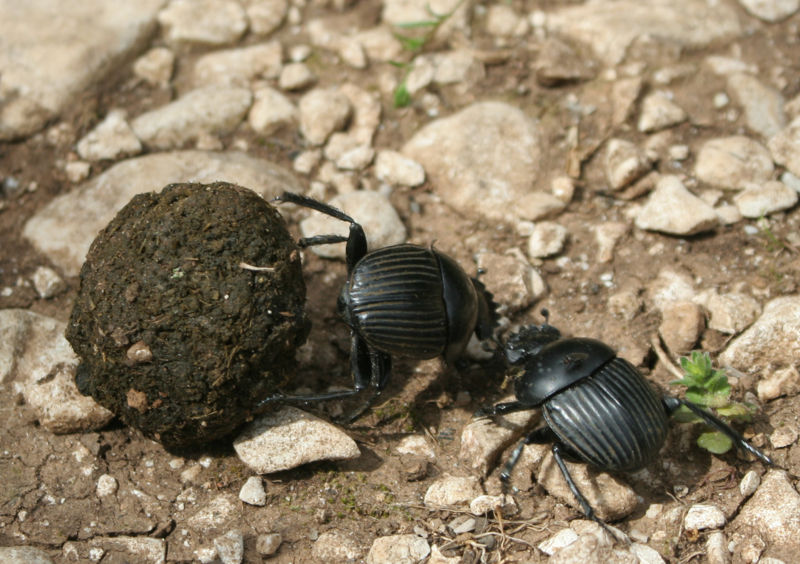Dung beetles are remarkable creatures. Not only does their way of life supply food from someone else's waste, but recent research has shown that their dung balls keep their feet cool on the hot desert sands.
 But now, research published in the journal Current Biology also shows that Dung beetles navigate by the light of the Milky Way, becoming the first insects known to use the night sky in this way to orient themselves. In fact, it's the first evidence of any animal using the diffuse light from the whole Milky Way, rather than the stars themselves, as a navigational aid.
But now, research published in the journal Current Biology also shows that Dung beetles navigate by the light of the Milky Way, becoming the first insects known to use the night sky in this way to orient themselves. In fact, it's the first evidence of any animal using the diffuse light from the whole Milky Way, rather than the stars themselves, as a navigational aid.
Dung beetles find a fresh pile of dung, take a pinch and roll it into a ball. They then must travel in a straight line away from the pile, or risk coming back round to it and having their dinner stolen. Under a starlit sky, they retain this ability and navigate a straight path. However, when it is overcast, and the stars are obscured, they lose their navigational skill. This inspired Marie Dacke and colleagues from Lund University and the University of Pretoria to design a series of experiments to find out how the beetles know which way to go.
They manufactured tiny cardboard caps, much like the blinders on race horses, to obscure the beetles' views of the sky. This made a significant difference to the route the beetles would travel. Even when a curtain was erected to block out all local landmarks that could be used for navigation, the most significant factor was their view of the sky.
To determine exactly what aspects of a starry sky were providing the navigational cues, they next took their volunteer beetles to the Johannesburg Planetarium, where they had full control over the sky overhead. This showed that the Milky Way itself, visible as a diffuse streak of light, was the most important factor, and the presence of individual stars made little difference.
Although this is, so far, a unique observation, the authors argue that there's no reason to think it's a unique strategy, citing some evidence of night time orientation in cricket frogs and stating:
"Although this is the first description of an insect using the Milky Way for their orientation, this ability might turn out to be widespread in the animal kingdom."









Comments
Add a comment